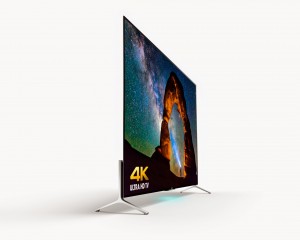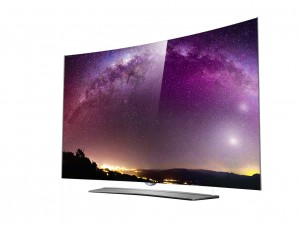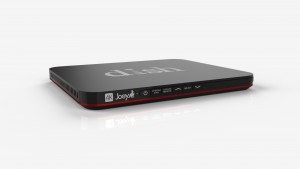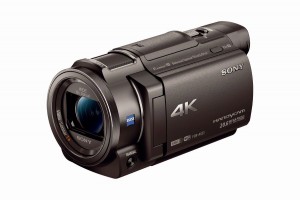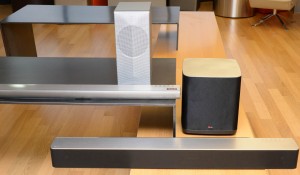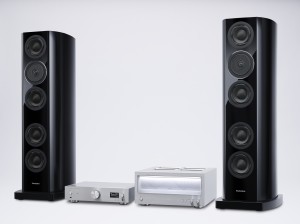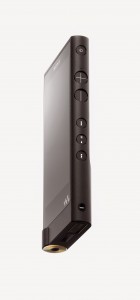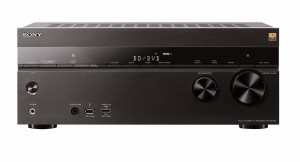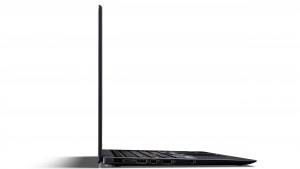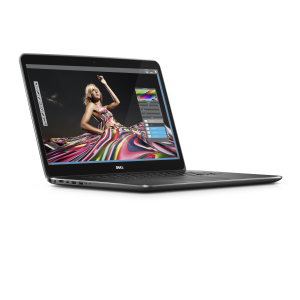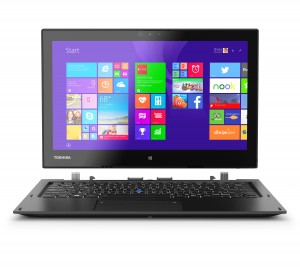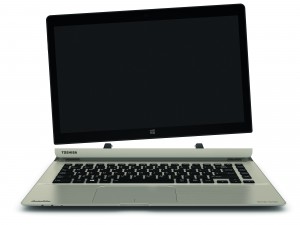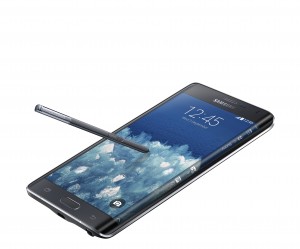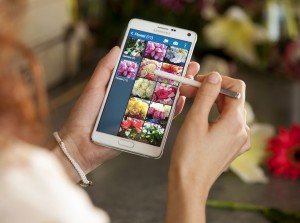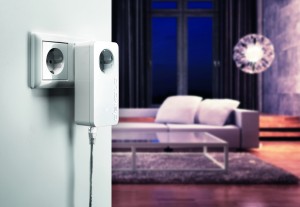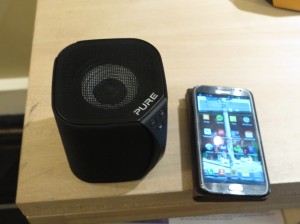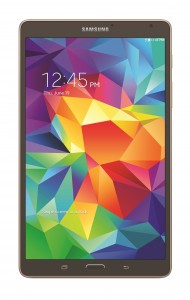Consumer Electronics Show 2015–Part 3–Home Entertainment
In Part One of this series about the Consumer Electronics Show 2015, I covered the trends associated with personal computing while I covered the “Internet Of Everything” and connected living in Part 2. This part now touches on home audio and video entertainment technology which is being more about 4K ultra-high-definition video and high-resolution file-based audio.
TVs and Home Video
The 4K ultra-high-definition TV technology is starting to mature with more manufacturers running even 10 models with this resolution. But they are improving on this with cost-effective high-quality display technology with LG using Quantum Dot technology and Samsung using SUHDTV nanocrystal technology. As well, a lot of manufacturers are running with more of the curved or bendable 21:9 TVs in their lineup.
Sony have premiered their XBR900C series 4K UHDTVs available in 55” 65” and 75”, and being 4.9mm thick. They also are implementing the X1 processor for optimumly real colours across all their current 4K TV range. They also launched an ultra-short-throw 4K UHDTV projector at US$10000 which is bringing 4K closer to the bar.
Samsung is supplying a range of flat and curved 4K TVs with screen sizes ranging from 48” to 88”. These will appear across three model lines – the JS9500, the JS9000, and the JS8500 and is in addition to a curved 105” set which has the new nanocrystal display technology.
LG are running with 8 different 4K model lineups that are targeted at every price and room Sharp are implementing the Quattron yellow-dot technology in their 4K sets while TCL are putting their foot in the door for 4K UHDTV technology.
Another important trend is the control software for the smart TVs. Sony, along with Sharp and TPV Philips are intending to implement the new Android 5.0 operating system while Samsung is intending to run with Tizen and LG to implement a newer iteration of the WebOS operating system. Razer is even working on a games console that runs the Android 5.0 operating system. Panasonic are implementing the Life+ Screen smart-TV platform which is based on the Firefox OS operating system. In each effort, the companies are using established open-source operating-system code as part of their smart-TV platforms.
Let’s not forget what will appear on these sets Dish Network are ready for 4K content with the first 4K-capable set-top device in the form of the Joey set-top box. These can connect to 4K UHDTV sets with HDMI 2.0 and HDCP 2.2 . As well, they are offering a Sling IPTV service along with music-focused upgrades to their service delivery.
This is also being brought on by the UHD Alliance which is a group of big-name TV manufacturers and Hollywood content providers who are working together to provide high-quality 4K UHD video content. They have goals not just for high resolution but high dynamic range, a wider colour gamut and immersive sound as part of the content from creation to viewing on the customer’s TV set.
It has been augmented by the Blu-Ray Disc Association announcing that they were to start work on the Ultra HD Blu-Ray Disc specification. Panasonic have put a fair bit of input in to it and have even shown a prototype Blu-Ray player that plays 4K UHDTV content. As well, the Secure Content Storage Association have defined a secure-content-storage specification for consumers to store premium content on a hard disk or NAS and have established a “best-case” principle for selling 4K video content. This is where a customer buys a 4K-grade copy of content and they can have the best resolution that the playback equipment they are viewing it on can offer.
Cognitive Technology is working on a “Smart TV” content recommendation engine and wanting to partner with TV manufacturers and content studios to improve the concept of machine-assisted content recommendation.
As for the PlayStation Experience, Sony is providing the PlayStation Now streaming game service for the Smart TVs and their PlayStation consoles and offering at least 100 PS3 games to this service. This is in answer to them selling 10.5 million PS4s since model introduction and 4.1 million of them being sold through the past Christmas shopping season.
The doyen of streaming movies, Netflix, is working on a “Netflix Recommended” scheme for TV sets. The goal is to have certified TVs to switch to Netflix as quickly and as easily as changing TV channels. Here, the TV would have to have a dedicated Netflix button on its remote control, a suspend/resume function and to have Lilyhammer showing on Netflix within 2-3 seconds. This effort is being focused on the US market but will be rolled out around the world.
DirecTV are heading towards toe “over-the-top” path with the Yaveo Hispanic IPTV service. This will feature programming that has Latin-American Spanish dialogue and concepts focused at the Latin-American community.
Imaging
This year, there has been an increase in the number of consumer-grade video-cameras that can natively film in 4K UHDTV. Sony have put up a 4K lightweight handheld Wi-Fi-enabled Handycam along with a GoPro-style “action cam” that surprisingly works in this format. These implement various “steady-shot” so you can take better footage with the camera hand-held. The action cam can shoot 4K footage at 30 frames per second and also implements an ultra-wide-angle lens.
Panasonic has used this show to get their fingers wet with 4K UHDTV imaging and launched their first 4K camcorder which can also do high-dynamic-range filming. They also released the Lumix CM1 Android-powered digital camera which has a 1” sensor.
Kodak is now on to lens-style cameras that attach to smartphones like what Sony initially offered. But these are more lightweight than the Sony models so you can stuff them in your coat pocket without them being too bulky and use a Wi-Fi link to the host device and implement NFC-based setup for Android phones.
Networked Audio technology
There is still a lot of interest in the networked audio technology whether in the form of music and home-theatre systems or in single-piece wireless-speaker setups.
LG are advancing a range of new Wi-Fi speakers that are directly targeted to answer Sonos’s market dominance. This include a battery-powered portable model along with their speaker range based around the Music Flow concept. It uses a mix of technologies that are similar to Sonos, Spotify Connect and Google Cast. It also implements Bluetooth NFC-based “touch-to-play” experience and allows you to create room zones with stereo/surround speaker clusters and a party-mode with music around the house. They come in the form of the H3. H4 Portable and H5 which are similar to the Sonos Play:1 and Sonos Play:3 but can run at a louder volume without distorting and clipping. The H6 Soundbar negates the need for a hub device and has its own bass abilities without the need of a subwoofer. LG is to field a variant of this soundbar to snap at the heels of the Sonos Playbar.
Panasonic is using the CES 2015 to exhibit its line of Technics hi-fi components Stateside. This is to capitalise on the Technics name that was associated with some highly-capable hi-fi components through the 70s, 80s and 90s with memories of some classy amplifiers, turntables, CD players and cassette decks; and was reintroduced in to Europe during the IFA 2014. Here, they have the R1 Reference Class System with the SU-R1 network media player / control amplifier feeding the SE-R1 150w/channel digital power amplifier which has those large power meters that Technics power amplifiers were known for and driving the SB-R1 3-way six-driver floorstanding speakers; along with the C700 Premium Class system which has a ST-C700 network media player / tuner serving the SU-C700 45w/channel integrated amplifier driving the SB-C700 coaxial 2-way 2-driver bookshelf speakers. It would be interesting to see how this renaissance picks up in areas like New York City – whether it has the same vim and vigour as what existed in the early 80s where hi-fi was really valued.
Samsung have launched their WAM-7500 and WAM6500 360 degree speakers which implement Ring Radiator Technology. This leads to sound that is diffused around the listening area, but they have the look that would make them blend in to a “retro-future” environment typical of a 1960s or 1970s space-fiction movie. They can connect to regular AV gear, or be wireless speakers that support Wi-F home-network connectivity along with, Bluetooth connectivity. The WAM6500 is the portable one of the bunch while the WAM7500 is intended to exist on a table or bench.
They are also launching the Milk Music “online-radio” service as a music service that can work with their multiroom systems.
One of the main drivers has been Google Cast which is an app-based content-streaming technology that uses the home network to “pull up” content from your smartphone on TVs and stereo systems in a similar vein to Apple’s AirPlay setup. Here, it has been pitched at the Android TV platform but the audio aspect has been pitched at a few home-audio devices offered by different companies. This is also run alongside the Google Nexus Player which is based on the Android TV platform.
Cambridge Audio are releasing a range of network-audio devices that are manageable on their front panel or through a mobile-platform app. These use a highly-optimised digital-analogue path with Wolfson WM8740 DAC circuitry and can support sources from the home network via AirPlay, DLNA / UPnP AV, or online sources like Spotify Connect. The CXN is a network audio player that provides these services to an existing sound system while this function is integrated in to two 7.1 channel bridgeable surround-sound amplifiers – the CXR-120 rating at 60 watts / channel or 120 watts / channel when bridged to stereo; and the CXR-200 which comes in at 120 watts / channel or 200 watts / channel when bridged to stereo.
Sony have launched a pair of S-Trainer street-style headphones as wireless music players but also have sensors to help you with your workout. But they have focused on High Resolution Audio by releasing the NW-ZX2 Android Walkman MP3 player capable of playing Master-Grade audio files and has 128Gb storage on board infinitely expandable with a microSD card.
They also released the HT-ST9, HT-NT3 and HT-XT3 soundbars with some being connected to the home network and the STR-DN1060, and STR-DN860 network-capable home-theatre receivers. These are all capable of working with High Resolution Audio which is, again the “Master Grade” audio content worked at 24-bit 96kHz or greater sampling rates, said to be close to the sound of the master tapes.
Massive are fielding a set of Doctor Who Bluetooth speakers which look like either a Dalek or a TARDIS. They have the classic effects associated with this show such as the “Exterminate” call or the TARDIS’s cloister bell. This is also alongside a pair of headphones with some Doctor Who iconography..
Gibson (who now have Philips Audio, Onkyo and TEAC) is now selling the Trainer exercise supra-aural Bluetooth headset as a way of being noticed that it has consumer-audio prowess rather than just Les-Paul-style musical-instrument prowess. This headset has an LED so you can be noticed at night and it also has a button to “duck” the audio so you can hear what is going on around or to talk with someone else. As well, the earpads are designed to be washable.
Audio Technica have refreshed their headphone lineup with some waterproof “sports-grade” intra-aural devices including a headset. They even pitched a set of intra-aural earphones that are “up-to-snuff” for audiophile applications. They also launched a set of noise-reducing headphones with one that could be sold in Europe for EUR€100 and a pair of gaming headsets – one being open-backed and one being closed-backed for different frequency response characteristics, but these headsets are pitched at the same price.and can serve as wired mobile headsets. Let’s not forget their other point of prowess with record-playing equipment where they released an entry-level fully-automatic turntable equipped with their own cartridge.
The final part of this series will cover some computer and smartphone peripherals of not but will also cover how the home network is to evolve courtesy of some new connectivity-technology improvements.

